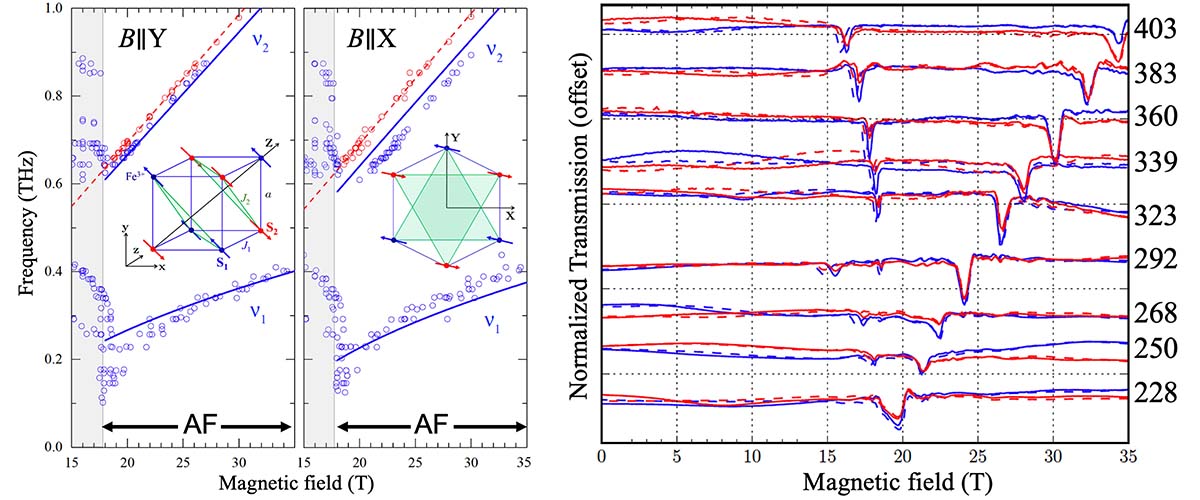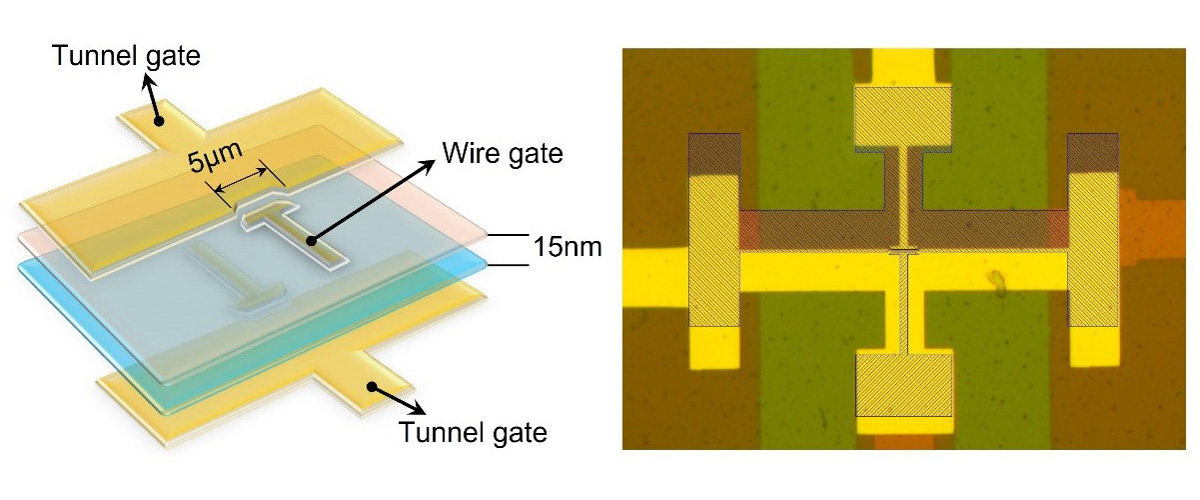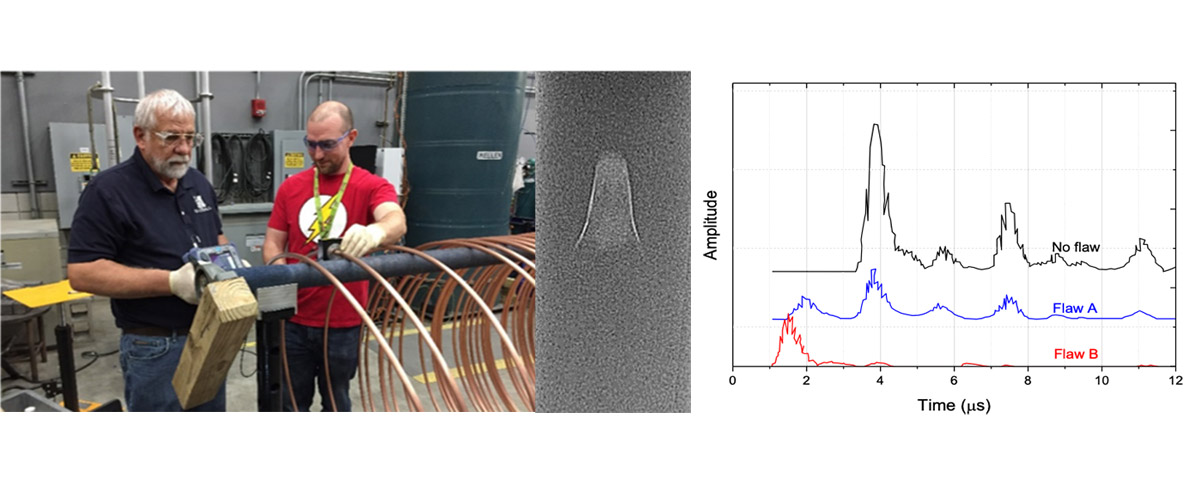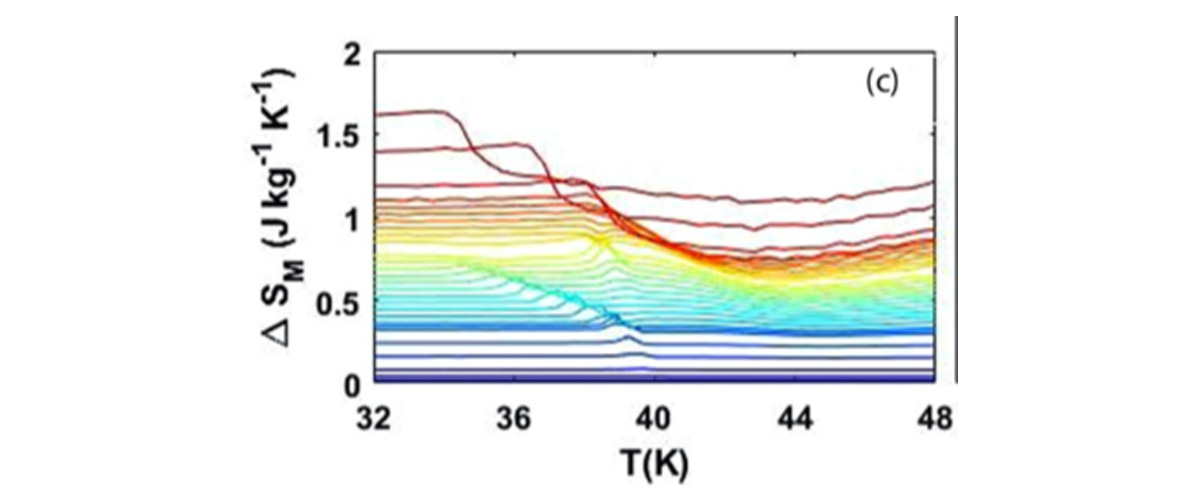What did scientists discover?
Magnetic resonance spectroscopy at terahertz frequencies and magnetic fields to 35T were used to learn how electron spins interact with each other and with the crystal lattice in BiFeO3. The spectrum varies with magnetic field orientation, implying that the spins are not simply embedded passively into the crystal, but act back to deform the lattice when the magnetic structure changes.
Why is this important?
Multiferroics that respond to both magnetic and electrical stimuli are candidate materials to replace silicon in future logic devices. BiFeO3 is one of the few multiferroics that retains suitable properties to above room temperature. It has an exotic magnetic structure that is destroyed by magnetic fields above 18T. Spectroscopy of the simpler high-field magnetic state, which had not been studied in detail before, reveals how the lattice deformation couples to the magnetism, providing important information for designing future logic devices based on BiFeO3.
Who did the research?
T. Rõõm,1 J. Viirok,1 L. Peedu,1 U. Nagel,1 D.G. Farkas,2 D. Szaller,2,3 V. Kocsis,2,4 S. Bordács,2 I. Kézsmárki,2,5 D.L. Kamenskyi,6 H. Engelkamp,6 M. Ozerov,7 D. Smirnov,7 J. Krzystek,7 K. Thirunavukkuarasu,7,8 Y. Ozaki,9 Y. Tomioka,9 T. Ito,9 T. Datta,10 and R.S. Fishman11
1NICPB, Tallinn; 2MTA-BME Budapest; 3ISSP Vienna; 4RIKEN Japan; 5IoP Augsburg; 6HFML-EMFL Nijmegen; 7National MagLab FSU; 8FAMU; 9AIST Tsukuba Japan; 10Augusta University; 11ORNL
Why did they need the MagLab?
Magnetic fields above 18T are needed to destroy the magnetic structure in BiFeO3, but fields well above 18T are not achievable in commercial magnets. The MagLab also has spectrometers covering the terahertz frequency range needed for these investigations.
Details for scientists
- View or download the expert-level Science Highlight, Magnetoelastic Coupling in the Multiferroic BiFeO3
- Read the full-length publication, Magnetoelastic distortion of multiferroic BiFeO3 in the canted antiferromagnetic state, in Phys. Rev. B
Funding
This research was funded by the following grants: G.S. Boebinger (NSF DMR-1644779); European Union; Estonian Ministry of Education; Estonian & Hungarian Academy of Science; Austrian Science Fund; Deutsche Forschungsgemeinschaft (DFG); and DOE BES (DE-AC05-00OR22725)
For more information, contact Stephen Hill.






